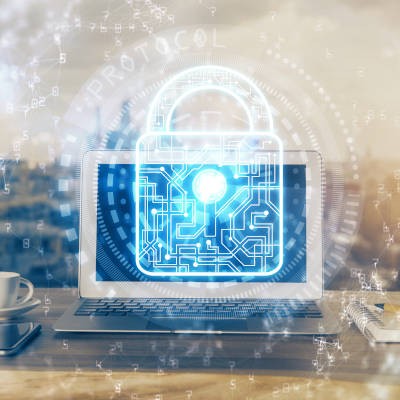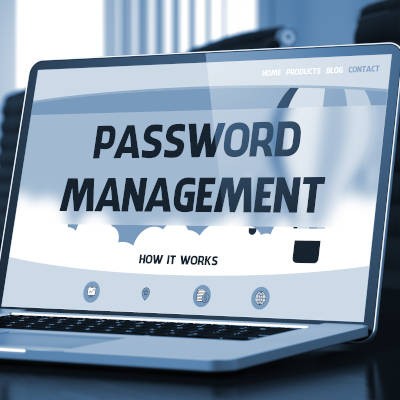One of the most prevalent problems that businesses now face are scams known as phishing attacks. When it comes to defending against these attacks, the capability to identify phishing as such is perhaps your greatest asset. Let’s go over a few signs that a message you receive might be a phishing attack.
BNMC Blog
It’s a common myth that Apple computers don’t get viruses. It’s not uncommon for a Mac user to chime in and say, “you should have gotten a Mac,” when a PC user mentions getting a virus or malware.
Let’s unpack this myth, and talk a little about how, no matter what technology you have, you need to protect it.
There are many security buzzwords that come into play when the technology available to help secure a business is discussed. The problem is that many of these buzzwords sound great but are actually very poor fits to the real needs of most small and medium-sized businesses. Let’s consider how these buzzwords play into the concept of “security theater” and how this can impact businesses negatively.
Internet-based companies have access to an audience that, at the very least, are extremely trusting of them. There is an expectation that these businesses will fulfill their promises while also protecting the information that their customers and clients provide to them, but are these expectations well-founded? Let’s consider common collection practices companies deploy and how you can keep yourself safe.
With so many people working from home due to stay-at-home orders resulting from the COVID-19 pandemic, IT security may not be at the forefront of users’ minds. Unfortunately, scammers and hackers aren’t unemployed during this time and are still causing havoc for businesses of all sizes. Let’s take a look at cybersecurity during COVID-19.
Video conferencing has been one of the surprise winners of the COVID-19 era. As large percentages of people are asked to distance from others, one solution that has been extremely popular is to have meetings over the Internet. While seemingly the whole world is using video conferencing solutions, for the business, there are other considerations that have to be made. Today, we’ll hit on some strategies you can use to improve the security of your web conferences.
It may not be a surprise to you that hackers and other scammers are trying to get between you and your stimulus money. Using the COVID-19 pandemic to prey on unsuspecting or ill-prepared people, they have already made off with more than millions of the $290 billion that the U.S. government has earmarked for its citizens. Let’s look at how you can avoid being another unfortunate victim of the modern cybercriminal.
Before we start on what practices you should be prioritizing when it comes to your cloud resources, we want to recognize that most businesses have found cloud computing to be extraordinarily useful. In fact, that is why we wanted to discuss some actions that you need to implement to help keep your cloud-based resources secure.
There are many reasons that your team may want (or need) to work from home, and there are many reasons to allow them to do so. A 2019 survey by OwlLabs indicated that 71 percent of remote workers are happy with their job (as compared to 55 percent of on-site workers); remote workers responded that they are 13 percent more likely than onsite workers to stay in their current job for five more years than onsite workers will; and when respondents claimed to be working longer than 40 hours per week, onsite workers were doing so out of necessity, while remote workers did so out of desire and enjoyment.
It’s not uncommon where a situation arises and you will find yourself working from home. To make this work, it is important that you keep a few additional issues in mind so that you can make the most of it. We have put together a few simple best practices that you should keep in mind as you operate remotely.
The past two decades have generally seen business technology in one of two camps: either IT (information technology), which includes all of a business’ computers, peripherals, and networking equipment, or OT (operational technology), which included everything else. As time has passed, both have advanced, and now both carry the risks once limited to IT. Let’s examine how you can better secure your business by focusing on the convergence of IT and OT.
Wi-Fi is one of those interesting technologies: On paper, it’s basically magic, but few things can send people into a rage faster than it not being available, or worse, not being good enough. Its capabilities have made it a great asset to the workplace, but you also need to be sure that you aren’t sacrificing your security to use it. We’ve put together some tips to help you achieve better, safer Wi-Fi.
As of September of 2019, research conducted by Verizon states that almost half of enterprises--half--are willing to sacrifice their mobile security in order to gain “advantages” in speed and productivity. This marks an increase from just 2018, when this metric measured at a still-too-high one-third of enterprises. Of course, such behaviors could bring severe consequences.
Your business is bound to collect a sizable cache of data, a significant percentage of which being the kind used to identify someone. This is exactly the kind of data that cybercriminals are looking for, which means it needs to be protected. Here, we’re covering the basics of how you can help secure your data’s integrity against cybercrime.
With all of the accounts that people have these days, it almost--almost--makes sense that people tend to use passwords that are too short, overly simple, and repeat across multiple accounts. Unfortunately, the only thing this does is to make accounts less secure. As a result, more and more authentication requirements are being put into place to keep security a priority.
Shadow IT is the moniker that people in the technology industry have coined for applications that employees download that aren’t vetted for use on an organization’s networks. For the better part of the past decade, IT administrators have universally demeaned the use of unsanctioned software for use on company networks due to potential vulnerabilities that come with these applications and any phantom costs associated with their use. What may surprise you is that some organizations are rolling back their shadow IT policies. Today, we will take a look at both ends of this issue.





















